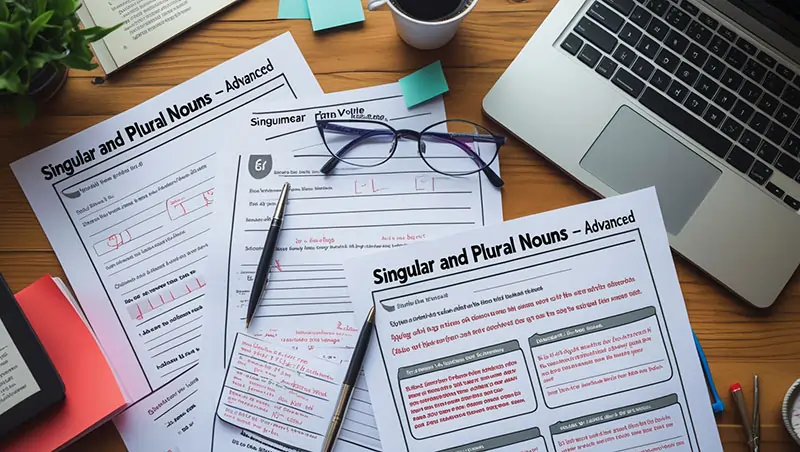Mastering Singular and Plural Nouns: Advanced Worksheet Guide
1. Introduction to Singular and Plural Nouns
Developing English grammar requires a basic awareness of the distinctions between singular and plural nouns. While a plural noun describes more than one (e.g., cat, box, child), a singular noun describes one person, place, thing, or idea.
While simple forms of pluralizing—adding “s” or “es—”advanced use often includes irregular forms and exceptions that can perplex even experienced learners.” This page provides a thorough study of using an advanced noun worksheets approach to master singular and plural nouns.
2. Common Rules and Exceptions
Here is a table summarizing common rules and exceptions:
| Rule | Singular | Plural | Notes |
| Add -s | car | cars | Most nouns |
| Add -es | bus | buses | Nouns ending in -s, -sh, -ch, -x, or -z |
| Change -y to -ies | baby | babies | Nouns ending in consonant + y |
| Add -s to vowel + y | toy | toys | Vowel + y stays the same |
| Change -f/-fe to -ves | wolf | wolves | Some exceptions: roofs |
| Irregular changes | child | children | No set rule |
| Same form for singular and plural | sheep | sheep | Contextual understanding needed |
| Latin/Greek origin | nucleus | nuclei | Often seen in scientific terms |
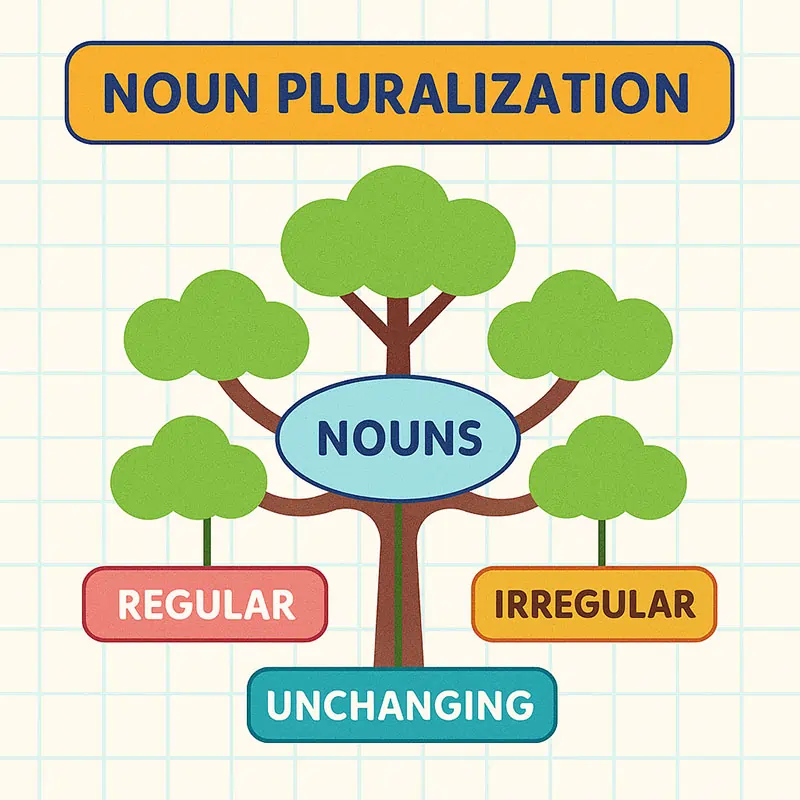
3. Importance of Practice
Not enough is memorizing rules by themselves. Regular practice including difficult material helps students to absorb patterns and exceptions. Advanced noun worksheets assist in closing the knowledge gap between theory and practical application.
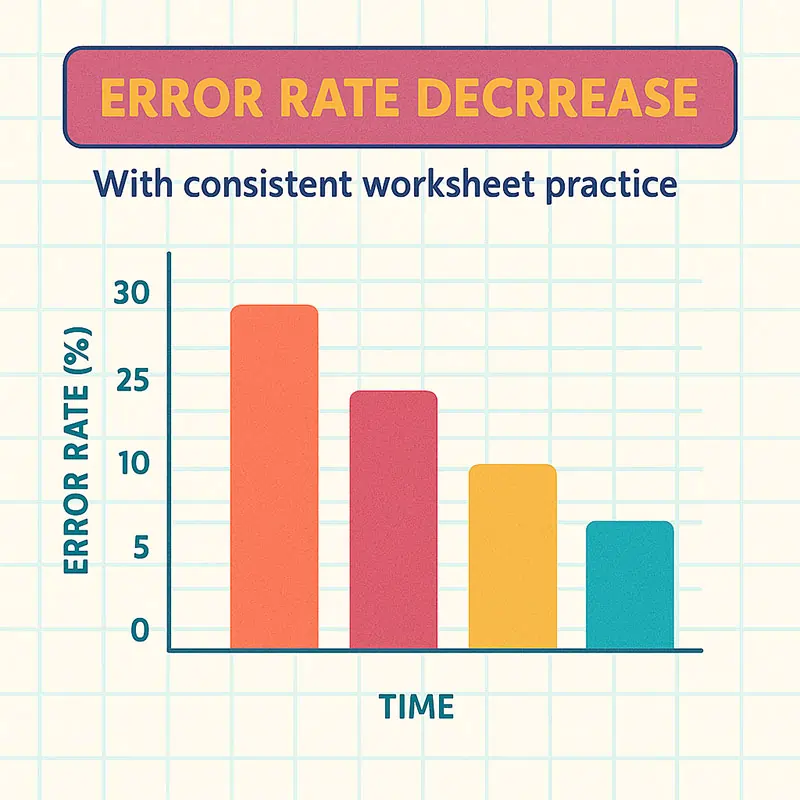
4. Overview of Advanced Worksheets
Advanced noun worksheets transcend basic translations. They consist of:
- Contextual fill-in-the-blanks: Based on nearby words, choose the right form.
- Exercises for error correction: spot and correct pluralizing errors.
- Sentence rewriting: Rewording sentences means changing singular to plural from vice versa.
- Task of categorization: pluralizing rules help to group nouns.
- Interactive matching: Matching singular forms to their irregular plurals in interactive form.
These drills push students to use rules naturally.
| Worksheet Type | Skill Focus | Example Task |
| Fill-in-the-Blanks | Contextual usage | The child played while other _____ waited. |
| Error Correction | Proofreading | The sheeps are grazing. |
| Rewriting | Structural conversion | Change: A goose walks. |
| Categorization | Rule application | Group: baby, toy, roof, knife |
| Matching | Recognition | Match: cactus → ? |
5. Tips to Use Worksheets Effectively
To maximize results from education:
- Starting with a diagnostic, first find your weak points using an initial test.
- Rotate between several forms to develop adaptability in your exercise.
- In daily writing or journaling, apply in writing new plural forms.
- Examine responses carefully. Review comments to learn from errors.
- Leverage timed sessions. increase confidence and speed.
- Charts and infographics support rule retention by visual aid.
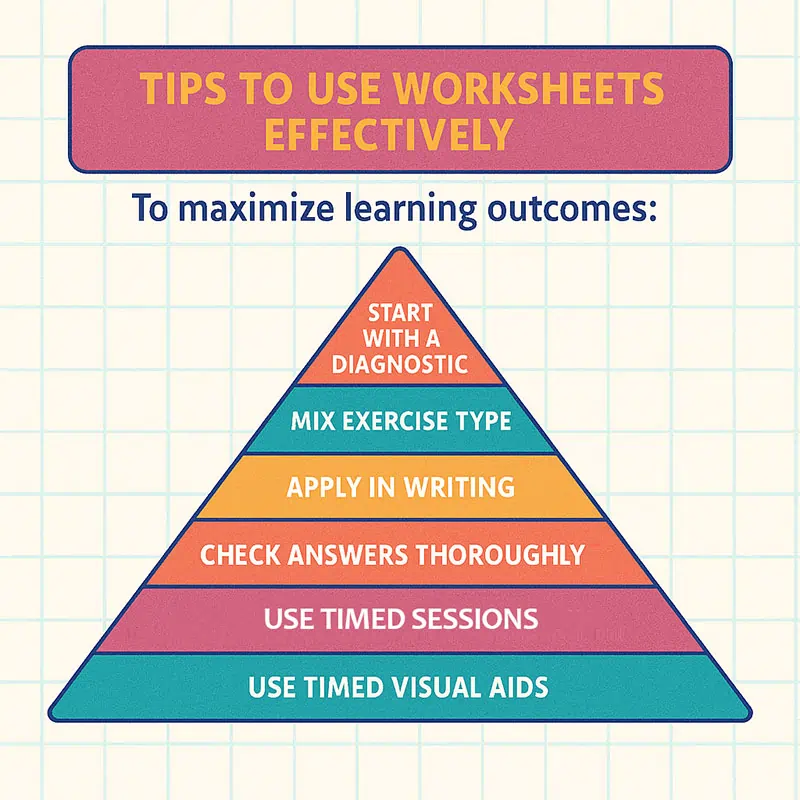
6. Sample Answers and Explanations
Sample Exercise: Error Correction
“The knifes were sharp, and the chefs used them carefully.”
Corrected Version: “The knives were sharp, and the chefs used them carefully.”
Explanation: The singular noun “knife” ends in -fe. According to the rule, it changes to -ves in the plural.
Sample Exercise: Fill-in-the-Blank
“One tomato, two _______.”
Correct Answer: “tomatoes”
Explanation: Nouns ending in a consonant + o usually add -es.
Sample Exercise: Sentence Rewriting
“A man walks into the room.”
Rewritten: “Men walk into the room.”
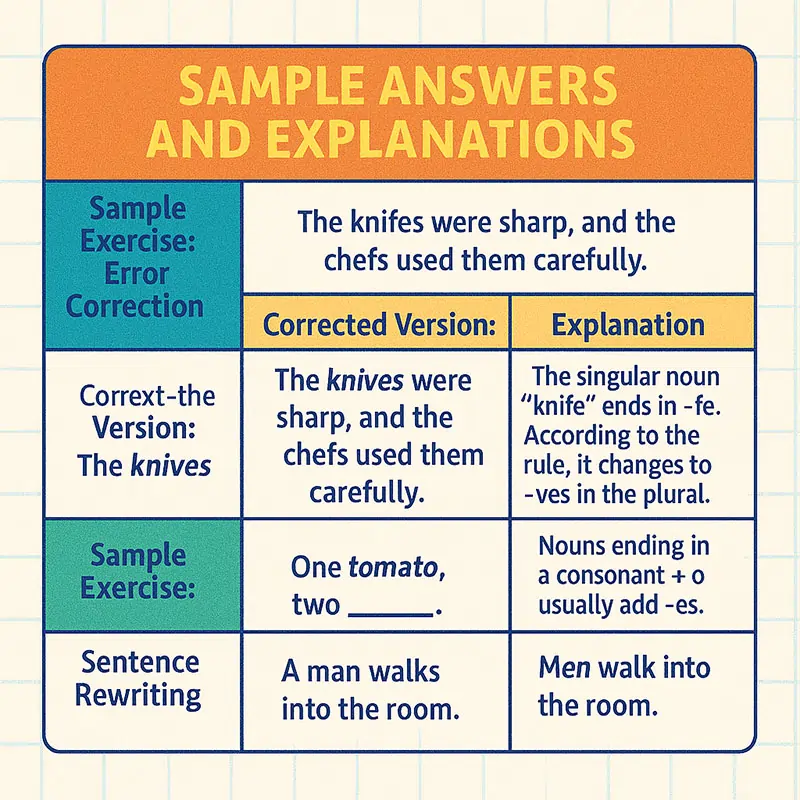
7. How to Assess Progress
See improvement using the following instruments:
- Self-Quizzes: Weekly multiple-choice or fill-in-the-blank self-quizzes.
- Peer Review: Peer Review: For evaluation, trade worksheets among classmates.
- Tracking Scores: Over four to six weeks, keep a progress chart noting your scores.
- Error Logs: Note down often occurring errors to concentrate on.
- Feedback Forms: Use teacher or tutor comments to hone knowledge.
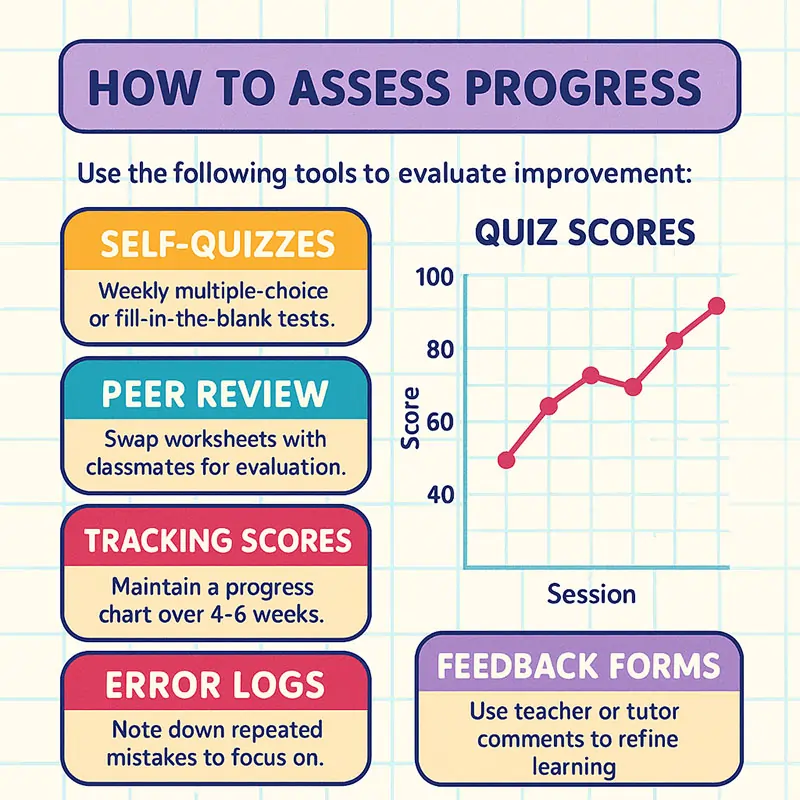
| Assessment Tool | Frequency | Benefit |
| Self-Quizzes | Weekly | Reinforcement |
| Peer Review | Bi-weekly | Perspective |
| Score Tracker | Ongoing | Motivation |
| Error Logs | Continuous | Targeted learning |
| Feedback | As needed | Guided improvement |
8. Conclusion and Additional Resources
Learning singular and plural nouns calls not only knowledge of the guidelines but also consistent application of them in organized practice. Advanced noun worksheets let students strengthen their grammar in meaningful ways, navigate irregularity, and reinforce challenging pluralizing patterns.
For further study, consider these resources:
- Books: “English Grammar in Use” by Raymond Murphy
- Websites: Grammarly, Purdue OWL, Khan Academy
- Apps: Quizlet (for flashcards), Grammarly (for error detection)
- Games: Word puzzles, online quizzes with pluralization challenges
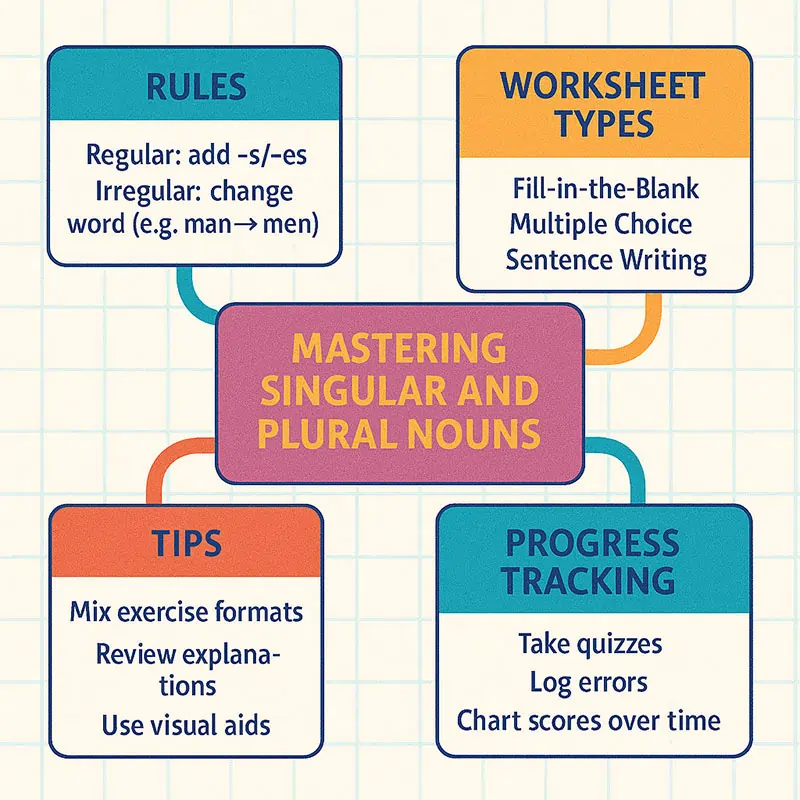
Combining structured theory with useful worksheets helps students to be ready to command both fundamental and advanced forms of noun pluralizing.

